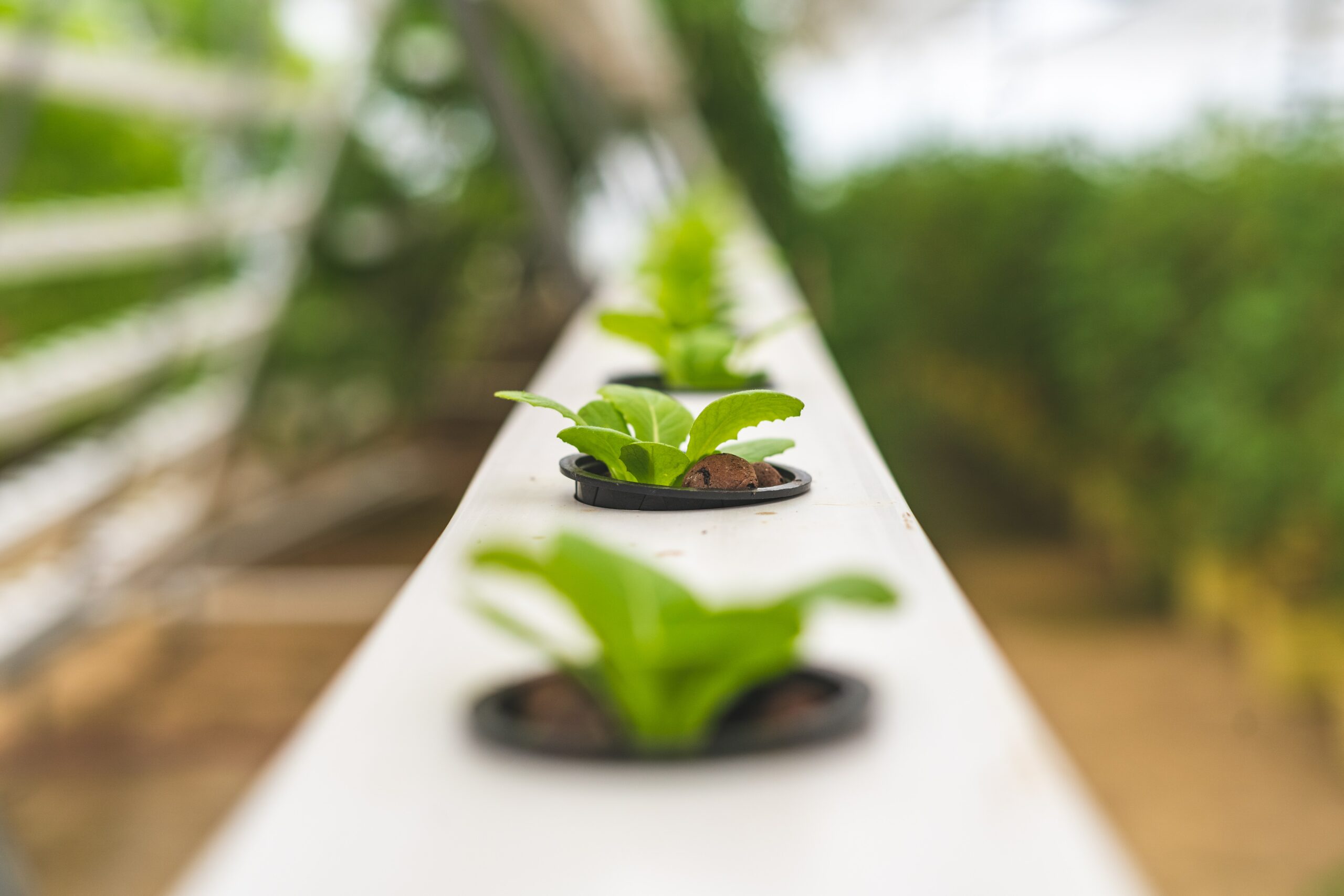🌾🌡 Climate Change & Agriculture
With climate change leading to more hydrologic droughts (see in this WaterWednesday) and increased surface drying, agriculture becomes more and more threatened. Some crops cant go long without water, thus resulting in crop losses, endangering food security. While irrigation can help, groundwater, which is often used to water plants during dry times, is a finite source. However lots of aquifers are in critical overdraft (more being pumped out than natural recharge in) and conventional farming contaminates valuable groundwater bodies with nitrate for decades. Therefore humans need to look for alternatives to grow food in a harsher climate without risking our drinking water. An approach is this weeks topic.

🐟🥬Aquaponics
Aquaponics is a farming technique which couples fish breeding with plant production. Water is cycled through fish ponds and basins on which food-plants float (see schematic below). The plants are kept afloat by styrofoam plates in which their “flowerpots” are nested. Instead of soil-substrate, the flowerpots are filled with rockwool, only giving the plants roots stability. Nutrients however are given in a rather unconventional way. In large bioreactors, bacteria decompose fish excrements to plant-available nutrients. The water then flows through the plant ponds and nourishes crops.

💧 Lower water use: As the plants are grown in ponds in greenhouses, the water is cycled multiple times over. This reduces water use by up to 90%, as evaporative or percolative losses are avoided.
🗺 Less space: Aquaponics are really space efficient. When combined with grow-lights, multiple ponds can be stacked uppon each other, thus reducing its footprint massively.
♻ Nutrient Cycling: Since the water does not percolate to groundwater, nutrients stay within the system. This also has the major benefit, that in total way less fertilizer is needed as none is washed out by precipitation.
🌿 🦗 No/Less Weeds & Pests: The rockwool substrate limits growth area to only that of the desired plant, thus there is way less space for weeds to grow. This allows the farmers to refrain from herbicide usage. Additional, as most aquaponic systems are within greenhouses, shielded from the surrounding nature. This limits insect and rodent damages, also making pesticides more or less obsolete.

Downsides
🥛 Greenhouses needed: To benefit from all the positive aspects of aquaponics, greenhouses or other growing facilities are needed, coming at a larger upfront cost compared to regular farming. However, greenhouses also come with the advantage of all year food production, being less vulnerable to temperature and rain seasonality
🌾 Planspecies limitation: While growing grain and corn this way is not done yet, its easy to grow herbs, salats and even potatoes (see this video).
🐟 Captive Breeding: This depends on your opinion on animals in captivity as a food source. In my personal point of view, in agriculture there is always a trade-off between synthetic fertilizer threatening planetary boundaries and animal-based fertilizer, potentially causing harm to the livestock. However, without fertilizer, we can not meet the globally growing demand for food. Therefore, in my opinion, as long as the fish farm is species-appropriate, aquaponics is a good alternative to conventional farming

Sources
de Graaf, I.E. et al. (2019) ‘Environmental flow limits to global groundwater pumping’, Nature, 574(7776), pp. 90–94. doi:10.1038/s41586-019-1594-4.
Lennard, W., & Goddek, S. (2019). Aquaponics: the basics. Aquaponics food production systems, 113-143.
Ramirez, C. (no date). Available at: https://ca-ra.org/de/der-ultimative-aquaponik-leitfaden-f%C3%BCr-anf%C3%A4nger/ (Accessed: 12 May 2023).
Schauenberg, T. (2021) Aquaponics are catching on – DW – 08/13/2021. Available at: https://www.dw.com/en/aquaponics-the-future-of-agriculture/a-58754544 (Accessed: 12 May 2023).


Comments are closed